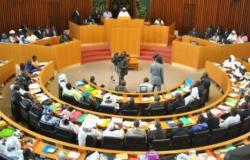Increased volatility in the bond market should be expected depending on the outcome of the US elections.
- The US Federal Reserve is expected to cut rates by 25 basis points at its November 6-7 meeting, which would bring the target range for the Fed funds rate to 4.50-4.75%.
- US economic data has generally surprised to the upside since the September meeting, while the increasing likelihood of a Trump victory in the US presidential election has also contributed to the recent bond sell-off.
- Given the revisions in short- and long-term interest rates and the appreciation of the US dollar, monetary conditions have eased considerably in recent weeks.
- We believe the Fed wants to move towards a more neutral policy as its confidence in the inflation outlook increases. The interest rate markets overwhelmingly expect a rate reduction of 25 basis points at the November meeting and assess the probability of a further reduction of 25 basis points in December at around 60%. We generally agree with these predictions.
- The outcome of the US elections could be the main factor disrupting the market’s assessment of the Fed’s easing cycle in 2025; We expect further near-term volatility in bond markets as investors digest the political implications of the election outcome.
- We believe the best way to incorporate the current macroeconomic and political backdrop into our portfolios is through steepeners on the US (and European) yield curve, although we tactically reduced curve risk in September. We will also look for opportunities to add duration risk opportunistically on any further rise in treasury yields or to add duration in other G10 bond markets where interest rate reduction cycles are less deep and already expected by the markets.
The Fed surprised market expectations in September with a larger-than-expected rate cut of 50 basis points to begin its rate-cutting cycle. The Fed thus signaled a significant shift in its monetary policy response function by focusing on the employment portion of its dual mandate. Although labor market data continues to present a generally constructive backdrop for the U.S. economic outlook, the Fed’s policy shift — toward preemptive, “insurance” rate cuts — suggests that Policymakers are aware of the risks of maintaining restrictive policy for too long, unnecessarily increasing the risks of recession in 2025.
Since the September meeting, Fed dot plots have shown a median forecast of 50 basis points more for the rest of the year and 100 basis points more in 2025. Forward interest rate markets have evolved to largely reflect this result, with a final rate in this cycle around 3.5%.
The Fed’s decisions have so far increased the likelihood of a US soft landing in 2025, although history tells us this is a rare outcome. US Treasuries yields have reacted to this favorable setup for growth prospects in 2025, with the 10-year yield increasing by 55 basis points since the Fed lowered rates on September 18.
However, any sharper-than-expected slowdown in the U.S. economy in 2025 relative to current expectations would leave room for the market to price in more aggressive cuts and a lower final rate. We think the odds of a hard landing may increase, but it depends on how much the labor market deteriorates.
In the short term, we prefer to position ourselves on steeper yield curves in the United States, as the easing cycle is now underway and long-term bonds still face the challenges of huge budget deficits and to potential uncertainties regarding inflation after the election.
We may consider opportunistically adding duration risk in the event of a further rise in bond yields, although we believe yield volatility is likely to remain high in the near term.
Business






